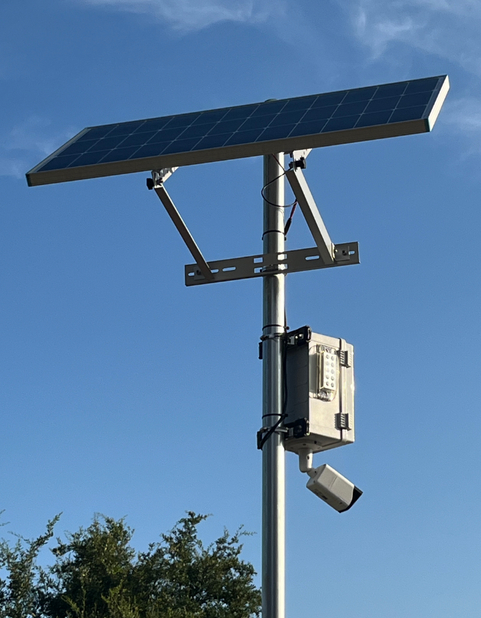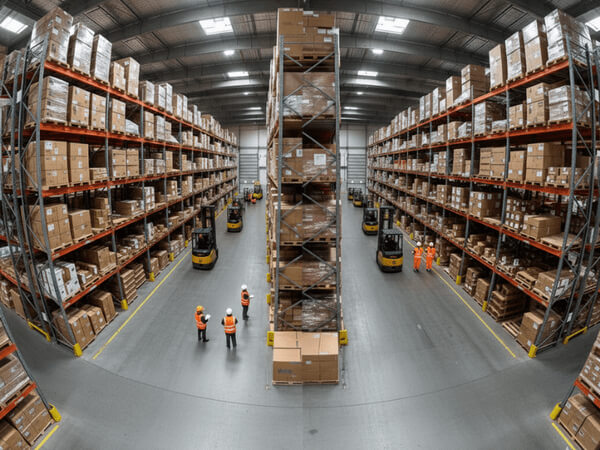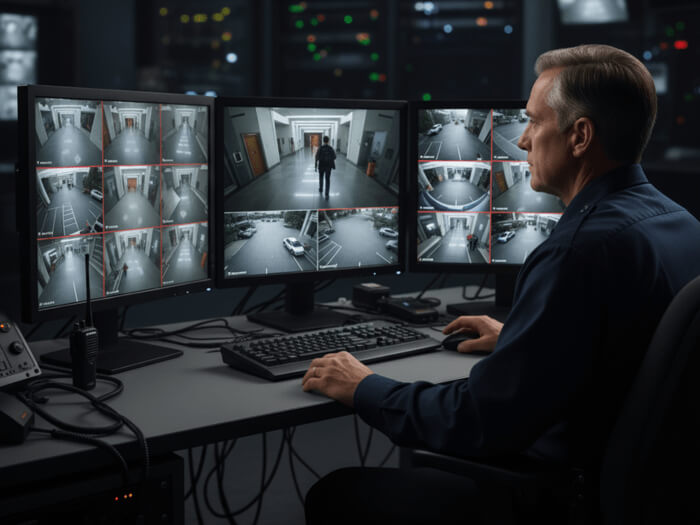
Indoor security cameras are typically mounted in fixed, relatively protected locations, such as the corner of a room or flush to the ceiling. And since they’re safely out of the elements, the top concerns for indoor cameras’ placement typically include getting the best visual coverage, keeping cameras out of the way of accidental bumps (or intentional vandalism), and routing the necessary cables.
But not every area you need to observe is conveniently indoors and climate-controlled. Parking lots, storage yards, production facilities, and agricultural sites need more cameras ready for the outdoors (and for the long term). And for getting eyes on the ground after a major storm or other disaster, or for providing video from a satellite parking lot, you can’t use the same cameras or mounts you would in an office or at the gate of an apartment complex.
Placing outdoor cameras, especially temporary ones, begins with the same considerations — and introduces several additional complicating factors. Especially when the placement isn’t convenient for providing wired power, or beyond the reach of your current network, a camera provider needs to deal with those connectivity needs up front. Outdoor camera systems also have to survive the worst weather they encounter — not just the average. And they have to be rugged enough to sustain sometimes-tough working environments like construction sites, industrial settings, or sports fields.
Security trailers and their discontents
For the kind of deployments that need independent power and toughness away from a business’s main physical plant, users often select trailer-based systems. These camera trailers typically feature an extendable pole with one or more cameras, and sometimes speakers or lights as well. That pole extends from a wheeled base unit that also contains control electronics and a generator or a large battery, and the entire thing can be towed into place. Some trailers support solar panels, too, often at or near ground level but sometimes mounted higher on the pole.
Connectivity options from trailers vary. Sometimes they are based on cellular video connections, and sometimes on wired connections with cabling that snakes from the cabinet to a central connection point. (And of course, sometimes there is power available, and an extension cord linked to the trailer may be used to power the camera and associated electronics, but the trailer’s bulk remains.)
Trailers solve certain problems well. No building or scaffolding is necessary to get an elevated viewpoint, and they can be deployed as fast as they can be towed to a site and powered on. As long as there’s practical space to put them, a trailer system can be extended simply by adding more. And when the camera is no longer needed, the whole trailer can be wheeled away.
However, conventional trailer systems also bring serious tradeoffs:

- Generator downsides: If running from an internal generator, trailers emit noise and exhaust gases, and require regular refueling.
- Ground footprint: Trailers typically take up the equivalent of at least one potential parking lot space. Even when it’s not a parking lot, that ground space may be valuable.
- Placement needs: Muddy, rocky, uneven, or difficult to access ground can severely limit trailer placement
- Stability: Over a height of 20 or so feet, many trailer-based systems require guy lines to ensure stability of the central mounting pole.
Solving trailer headaches with cabinets
A different approach to rugged outdoor surveillance, when the environment allows, is to use cabinet-based camera systems instead. Cabinet systems typically enclose the same kind of electronics that a trailer would, but in a much smaller enclosure. That’s because the bulk of a trailer isn’t about the camera at all, or even the network. Instead, most of what makes a trailer big enough to require towing into place is the mechanism of mounting pole, generator, and road-capabile chassis — none of which a cabinet needs.
With their minimal bulk, cabinet systems are often mounted on a dedicated pole, or on an existing utility pole. They can also be adapted to fit the look and available mounting opportunities of the actual install site. In a concert or area setting, cabinets can be flown on a metal truss the same way speakers or lights are, or they can be non-destructively mounted to a tree in a park or other natural setting. In many cases, cabinets can also be mounted to the side or roof of another structure, such as an oil derrick or a storage silo.
All-in-one cabinet options such as Eagle Eye’s Anywhere Cabinet Systems typically draw power from solar panels. (Anywhere Cabinet Systems by default use a secure cellular connection, and along with Eagle Eye’s other Cabinet Systems can also use wired power. An optional external power supply can draw on the power running to existing utility poles.)
More camera bang for the buck
Cabinet systems can’t just be wheeled in the same way that trailers can. However, with their smaller size, cabinets can be quickly shipped in greater quantities than trailer systems, and many of them are literally small enough to fit in a backpack, which means they can be trekked into even the most difficult locations, such as areas struck by a hurricane or a flood.
And even in places like parking lots, you can afford to set up several cabinet systems to give you far more complete coverage at a price lower than renting a trailer system by the week or the month…and for a lot less than a trailer would cost.
Once installed, each cabinet system gives you a wide-angle view of the area you need to cover — or you can attach to it a narrow-view camera for specialized applications like license plate recognition. In areas with available power and network, you can even attach up to seven cameras to an Eagle Eye Bridge Cabinet for widely distributed coverage.
In short, cabinets let you get better coverage at a lower price.

Before you go
Surveillance trailers have an ongoing role in the places that demand them most, especially when the need for surveillance is strictly time-limited, and where instant mobility is a high priority. Trailers also have a visibility advantage which may be valuable as a deterrent on construction sites or car lots. And of course, trailers are a technology that’s improving, too, with smaller and quieter generators, more capable batteries, and more compact structures.
But innovative mounting and power options mean there are more and more places where a cabinet should be seriously considered over a trailer. In some cases cabinet-attached cameras can be quickly re-aimed or entirely repositioned, and they take up far less of your valuable ground space. Cabinets, too, can be equipped with sirens or talk-down speakers as well as lights, giving you an excellent visible deterrent to thieves or intruders.
Depending on your situation, trailers may still be your best option. But before you select them out of habit, it makes sense to see what cabinets can do for you now.

Timothy Lord has witnessed and written about IT security trends and the ongoing evolution of SaaS for more than 25 years.
Other posts that might interest you

Video Surveillance 101: Field of view, distortion, and dewarping
When you select a camera for video surveillance, an important aspect that you're actually choosing is the camera's lens. Just like typical cameras you use to take snapshots, surveillance cameras…
November 11, 2025
Are there guns in the picture? How video surveillance helps
There have been many cases in which armed criminals have wounded or killed others, sometimes with no known motive, or as a result of personal grievances. Sadly, recent years have…
October 15, 2025
Surveillance 101: Remote video monitoring explained
You've probably seen movies where government agencies, shadowy masterminds, or company security teams have instant access to surveillance cameras from around the world and can zoom in on any subject…
September 30, 2025




